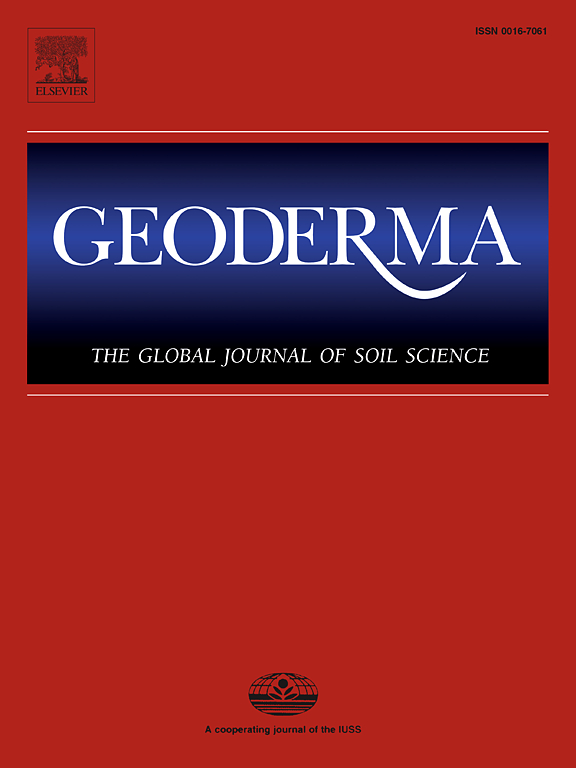南达科他州东部农田长达一个世纪的土壤剖面截断
IF 6.6
1区 农林科学
Q1 SOIL SCIENCE
引用次数: 0
摘要
土壤流失仍然是长期可持续农业生态系统的障碍。由于缺乏有用的遗留数据,很难准确地量化几十年期间的土壤流失。利用美国南达科他州东部20世纪20年代和50年代农业土壤的13个以前未见过的土壤调查描述,我们量化了上个世纪的土壤流失。尽管这些描述缺少术语,但它们包括一些标记特征,如水平深度、碳酸盐的深度、纹理类和母材的深度。通过对原始地点的重新访问和采样,利用现代土壤描述来评估土壤水平厚度和形态差异的大约100年变化,以量化这一时期的土壤流失量。利用碳酸盐的深度变化、层深和边界、质地变化和对比以及母质的深度来量化土壤流失的范围以及地下和表层土壤层的潜在混合。1926 ~ 2023年平均土壤流失量为18.0 cm, 1955 ~ 2023年平均流失量为14.9 cm。由此得出的年历史土壤流失率和土壤流失量在1.9-2.2 mm yr - 1和26.0-30.6 Mg ha yr - 1之间,这与利用较短时间尺度的区域研究相当。这项研究强调了遗留土壤数据集的效用,以及跟踪长期人为影响对土壤学建模的重要性。本文章由计算机程序翻译,如有差异,请以英文原文为准。
Century-long soil profile truncation in eastern South Dakota agricultural fields
Soil loss remains a barrier to long-term sustainable agro-ecosystems. It is difficult to accurately quantify soil loss over multidecade time periods due to a lack of useful legacy data. Utilizing thirteen previously unseen soil survey descriptions of agricultural soils from the 1920′s and 1950′s in eastern South Dakota, USA, we quantify soil loss over the last century. Although the descriptions are missing nomenclature, they include marker features such as horizon depths, depth to carbonates, texture class, and depth to parent material. By revisiting and resampling the original locations, modern soil descriptions were utilized to assess the approximate 100-year changes in soil horizon thickness and morphological differences to quantify the amount of soil lost over the period. Changes in depth to carbonates, horizon depths and boundaries, texture changes and contrast, and depth to parent material were used to quantify the range in soil loss and potential mixing of subsurface and surface soil horizons. The average total amount of soil lost was 18.0 cm (1926 to 2023) and 14.9 cm (1955 to 2023). The resulting annual historical rates and masses of soil loss were between 1.9–2.2 mm yr−1 and 26.0–30.6 Mg ha yr−1, which is comparable to regional studies that utilized shorter timescales. This study highlights the utility of legacy soil datasets as well as the importance of tracking long-term anthropogenic impacts for pedological modeling.
求助全文
通过发布文献求助,成功后即可免费获取论文全文。
去求助
来源期刊

Geoderma
农林科学-土壤科学
CiteScore
11.80
自引率
6.60%
发文量
597
审稿时长
58 days
期刊介绍:
Geoderma - the global journal of soil science - welcomes authors, readers and soil research from all parts of the world, encourages worldwide soil studies, and embraces all aspects of soil science and its associated pedagogy. The journal particularly welcomes interdisciplinary work focusing on dynamic soil processes and functions across space and time.
 求助内容:
求助内容: 应助结果提醒方式:
应助结果提醒方式:


